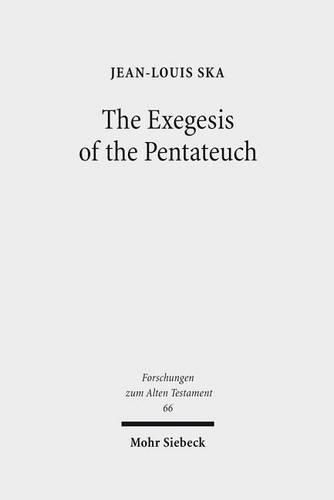Readings Newsletter
Become a Readings Member to make your shopping experience even easier.
Sign in or sign up for free!
You’re not far away from qualifying for FREE standard shipping within Australia
You’ve qualified for FREE standard shipping within Australia
The cart is loading…






The studies collected in this book represent landmarks in the vast exegetical landscape of the Pentateuch. In the first series of these studies, Jean-Louis Ska examines key texts from different perspectives and draws a map to show the way. These texts are mainly the story of the flood (Gen 6-9), the call of Abraham (Gen 12:1-4), God’s covenant with Abraham (Gen 15), the Lord’s apparition to Abraham in Mamre (Gen 18), the sacrifice of Isaac (Gen 22), the introduction to the Sinai covenant (Exod 19:3-6), and the meal and the vision on the mountain (Exod 24:9-11). Different methods are used according to the text or the topic treated: literary criticism, redaction criticism, inner-biblical exegesis, and narrative analysis. In the second part, the author grapples with some basic issues in recent debates about exegetical methods: the function of the narrator, the validity of resorting to the category of redactor , the nature and purpose of the biblical law collections, and the legitimacy of a critical reading of the Old Testament. The Pentateuch is a cantata with many voices, and faithfulness to its nature means that the exegete has to use all the instruments at his or her disposal to make this old music be heard once again.
$9.00 standard shipping within Australia
FREE standard shipping within Australia for orders over $100.00
Express & International shipping calculated at checkout
The studies collected in this book represent landmarks in the vast exegetical landscape of the Pentateuch. In the first series of these studies, Jean-Louis Ska examines key texts from different perspectives and draws a map to show the way. These texts are mainly the story of the flood (Gen 6-9), the call of Abraham (Gen 12:1-4), God’s covenant with Abraham (Gen 15), the Lord’s apparition to Abraham in Mamre (Gen 18), the sacrifice of Isaac (Gen 22), the introduction to the Sinai covenant (Exod 19:3-6), and the meal and the vision on the mountain (Exod 24:9-11). Different methods are used according to the text or the topic treated: literary criticism, redaction criticism, inner-biblical exegesis, and narrative analysis. In the second part, the author grapples with some basic issues in recent debates about exegetical methods: the function of the narrator, the validity of resorting to the category of redactor , the nature and purpose of the biblical law collections, and the legitimacy of a critical reading of the Old Testament. The Pentateuch is a cantata with many voices, and faithfulness to its nature means that the exegete has to use all the instruments at his or her disposal to make this old music be heard once again.